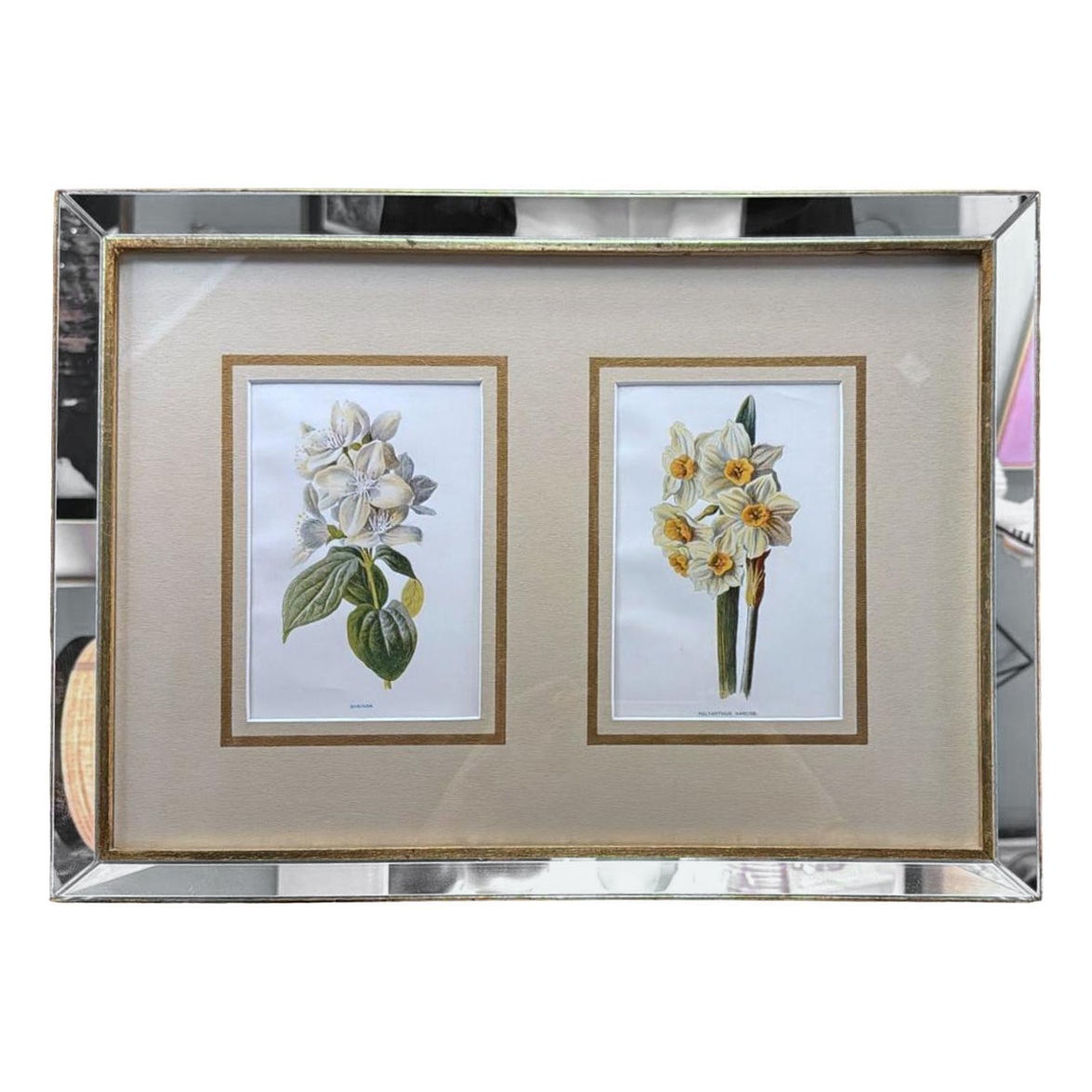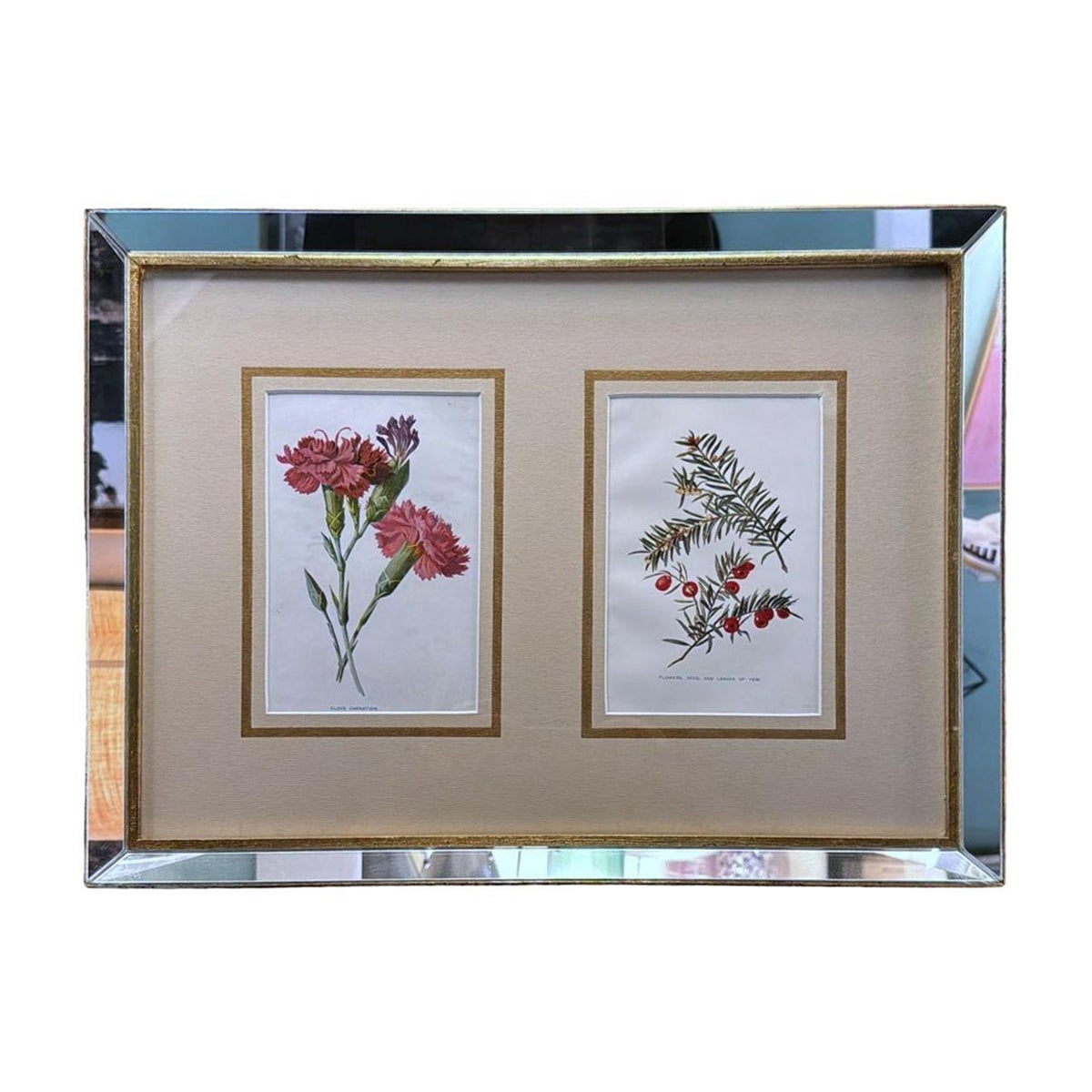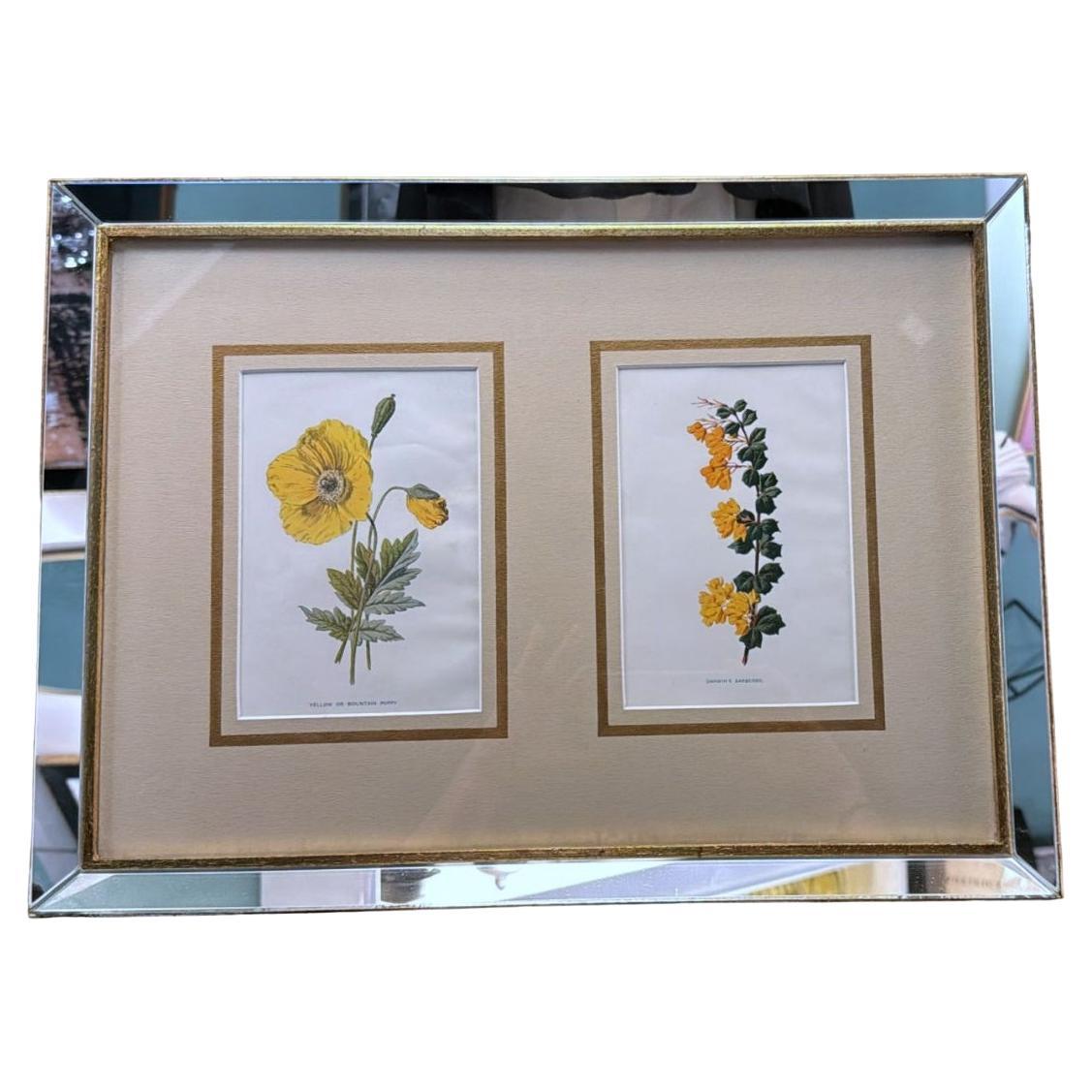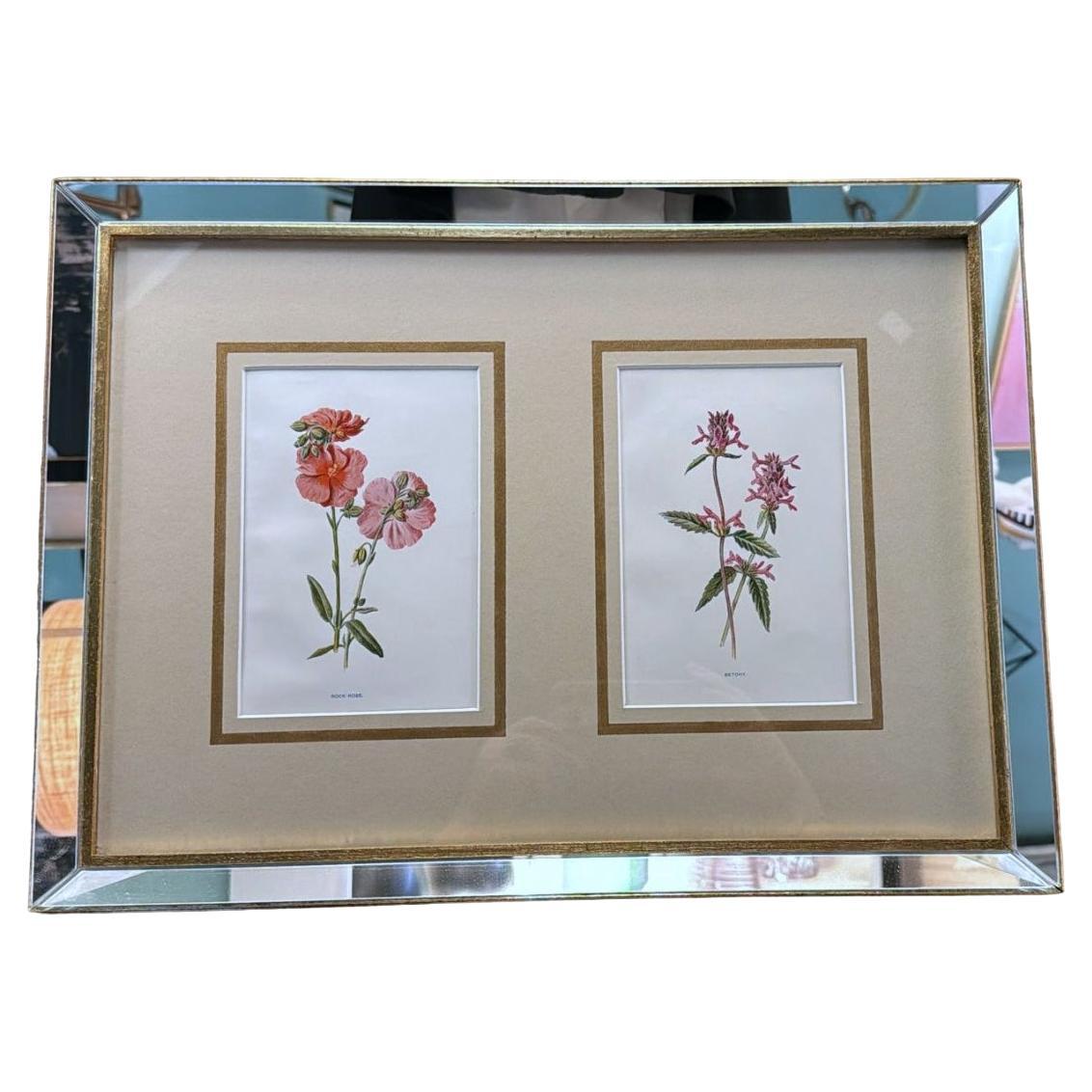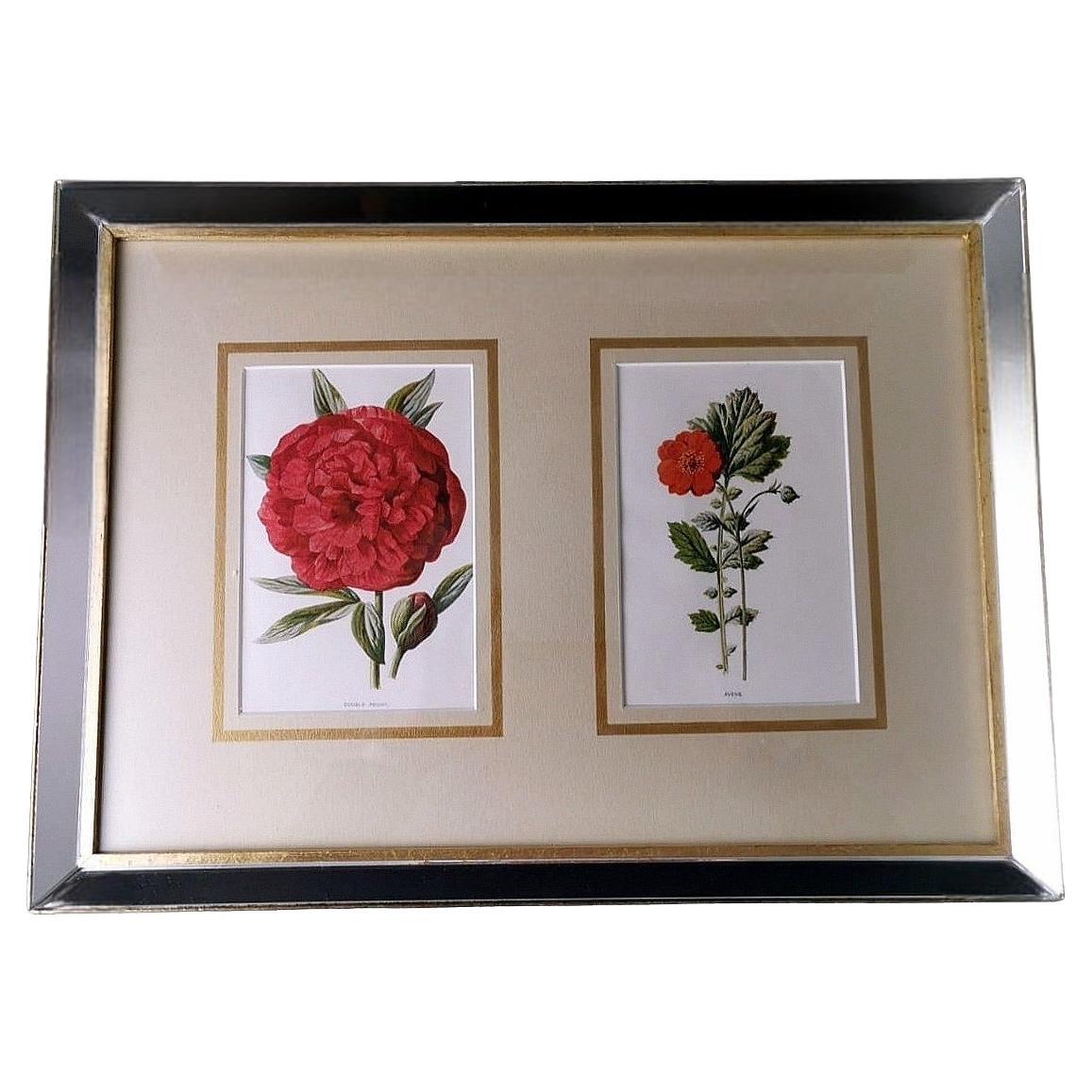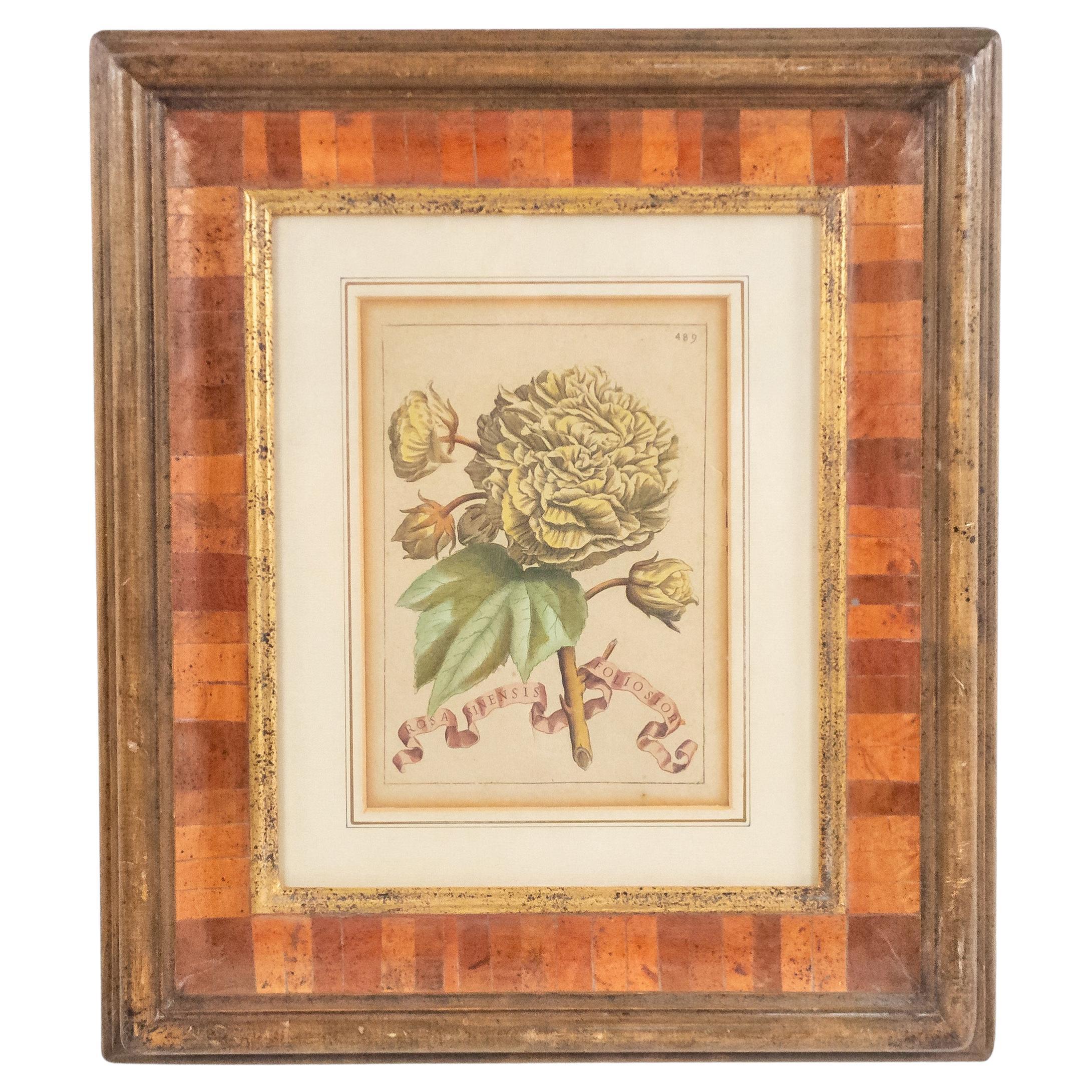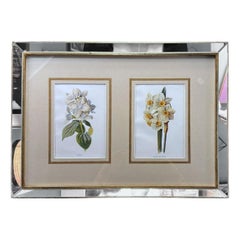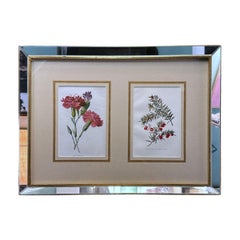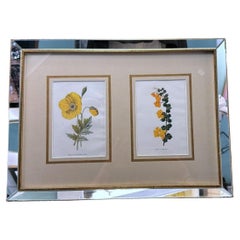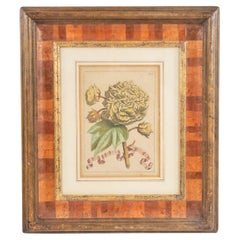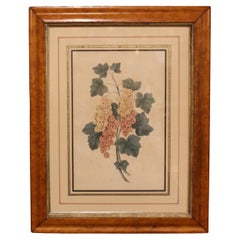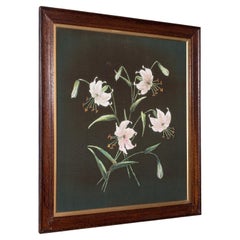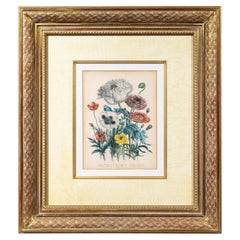Items Similar to Italian Mirror Frame with English Chromolithographic Floral Prints – 02
Want more images or videos?
Request additional images or videos from the seller
1 of 13
Italian Mirror Frame with English Chromolithographic Floral Prints – 02
$824.97
£610.73
€690
CA$1,141.56
A$1,258.54
CHF 658.43
MX$15,439.98
NOK 8,288.32
SEK 7,750.89
DKK 5,256
About the Item
We kindly suggest reading the entire description, as it provides detailed technical and historical information to ensure the authenticity of our items. The frame enclosing the two prints is quite unique and unusual; it was recently crafted by an experienced master cabinetmaker who has a workshop in one of the coolest neighborhoods of Florence: San Frediano, known for its charming and one-of-a-kind artisan workshops, where everything is handmade. The master craftsman added four shiny mirrors to the sides of the flat part of the frame, tilting them outward, while painting the outer part and the inner edge with gold, creating a bright, elegant, and sophisticated optical effect. The prints are enclosed within the frame by a refined cream-colored mat with a gold border. The prints are original paper artworks, not pages from a book. They were printed in London between 1900 and 1905 using the "chromolithography" technique (from the Greek chromo meaning color, lithos meaning stone and graphia meaning drawing), a method developed in 1837 that involved overlaying images of different colors engraved on separate stones, one for each color. This process allowed for the reproduction of vibrant tones and shades, imitating the colors of tempera paintings. The prints depict two beautiful and significant floral subjects: on the left are leaves and flowers of the Sycamore tree, and on the right is the Double Trumpet Daffodil. The Sycamore is not a flower but a tree, known as the sycamore. It belongs to the Ficus genus (specifically Ficus sycomorus) or refers to a type of maple, Acer pseudoplatanus, also known as the mountain maple. In botanical symbolism, the sycamore represents Protection and stability: As a strong, long-lived tree, it symbolizes security, permanence, and strength. Eternity and regeneration: In many ancient cultures, the sycamore symbolized eternal life and regeneration. The sycamore has strong historical and spiritual significance in many cultures. In ancient Egypt, it was considered a sacred tree, often associated with the goddess Hathor, and believed to provide protection and nourishment in the afterlife. Some sycamores were planted near tombs, as they were thought to represent the continuity of life after death. In the Bible, the sycamore is mentioned several times, with one of the most famous stories involving Zacchaeus, a tax collector who climbed a sycamore tree to see Jesus as he passed by. In other cultures, such as Greek and Roman, the sycamore tree was valued for its shade and ability to grow in difficult places, symbolizing resilience and strength. Though it does not have a direct meaning in the language of flowers, the sycamore’s role in stories and cultures gives it a profound symbolic value tied to protection, eternal life, and inner strength. The Double Trumpet Daffodil is known as the double-cupped narcissus or double trumpet narcissus. It is a variety of Narcissus, characterized by a larger, often double, central corona (the trumpet-shaped part), giving it a fuller and more striking appearance. The narcissus has several symbolic meanings in the language of flowers, and the double trumpet variety amplifies these meanings due to its elaborate form: Rebirth and new beginnings: As one of the first flowers to bloom in spring, the narcissus represents hope and renewal. Self-esteem and vanity: Like all varieties of narcissus, it is linked to the myth of Narcissus, the youth who fell in love with his own reflection. Vitality and abundance: The double trumpet variety, with its rich and showy blooms, strengthens the symbolism of prosperity and abundance. The narcissus has ancient origins, appearing in various legends and myths, especially in Greek mythology, with the story of Narcissus, the young man who died while gazing at his own reflection, unable to look away. In the place where he died, the flower that now bears his name bloomed, linking the flower with the ideas of vanity and self-reflection. Beyond Greek mythology, the narcissus is celebrated in many other cultures. In China, for example, it is considered a symbol of good fortune and prosperity, especially during Chinese New Year celebrations, as it blooms during this time. The double trumpet narcissus, with its intricate form, is often used to represent something unique and precious, such as abundant renewal or a positive transformation in life. Our frame, featuring these two flowers, is perfect for easily decorating any room in the home, both for the symbolism behind the prints and for the splash of color they provide. Dimensions: Width 49 cm, Height 35 cm, Depth 3 cm. Each print measures 18x12 cm. For all our shipments, we use special packaging materials (custom-made wooden crates, polystyrene, etc.) to ensure maximum protection and safety of the items.
- Dimensions:Height: 13.78 in (35 cm)Width: 19.3 in (49 cm)Depth: 1.19 in (3 cm)
- Style:Late Victorian (Of the Period)
- Materials and Techniques:
- Place of Origin:
- Period:
- Date of Manufacture:1900-1905
- Condition:Wear consistent with age and use. The frame and print are in good condition.
- Seller Location:Prato, IT
- Reference Number:Seller: 158281stDibs: LU4632241976792
About the Seller
5.0
Platinum Seller
Premium sellers with a 4.7+ rating and 24-hour response times
Established in 1977
1stDibs seller since 2019
286 sales on 1stDibs
Typical response time: 1 hour
- ShippingRetrieving quote...Shipping from: PRATO, Italy
- Return Policy
Authenticity Guarantee
In the unlikely event there’s an issue with an item’s authenticity, contact us within 1 year for a full refund. DetailsMoney-Back Guarantee
If your item is not as described, is damaged in transit, or does not arrive, contact us within 7 days for a full refund. Details24-Hour Cancellation
You have a 24-hour grace period in which to reconsider your purchase, with no questions asked.Vetted Professional Sellers
Our world-class sellers must adhere to strict standards for service and quality, maintaining the integrity of our listings.Price-Match Guarantee
If you find that a seller listed the same item for a lower price elsewhere, we’ll match it.Trusted Global Delivery
Our best-in-class carrier network provides specialized shipping options worldwide, including custom delivery.More From This Seller
View AllItalian Mirror Frame with English Chromolithographic Floral Prints - 01
Located in Prato, Tuscany
We kindly suggest reading the entire description, as it provides detailed technical and historical information to ensure the authenticity of our items. The frame that encloses the tw...
Category
Early 20th Century British Late Victorian Prints
Materials
Mirror, Wood, Paper
Italian Mirror Frame with English Chromolithographic Floral Prints - 04
Located in Prato, Tuscany
We kindly suggest reading the entire description, as it provides detailed technical and historical information to ensure the authenticity of our items. The frame enclosing the two pr...
Category
Early 20th Century British Late Victorian Prints
Materials
Mirror, Wood, Paper
Italian Frame with Mirrors and English Chromolithographic Prints of Flowers - 05
Located in Prato, Tuscany
We kindly suggest reading the full description, as we aim to provide you with detailed technical and historical information to ensure the authenticity of our items. The frame enclosi...
Category
Early 20th Century British Late Victorian Prints
Materials
Mirror, Wood, Paper
Italian Mirror Frame with English Chromolithographic Floral Prints - 03
Located in Prato, Tuscany
We kindly suggest reading the entire description, as it provides detailed technical and historical information to ensure the authenticity of our items. The frame enclosing the two pr...
Category
Early 20th Century British Late Victorian Prints
Materials
Mirror, Wood, Paper
Italian Mirror Frame with English Chromolithographic Floral Prints -06
Located in Prato, Tuscany
We kindly suggest that you read the entire description, as with it we try to give you detailed technical and historical information to guarantee the authenticity of our objects.
The ...
Category
Early 20th Century British Late Victorian Prints
Materials
Mirror, Wood, Paper
Nargeol Adrien Pair Prints Painted Watercolor With Gilded Frames
Located in Prato, Tuscany
We kindly suggest you read the whole description, because with it we try to give you detailed technical and historical information to guarantee the authenticity of our objects.
Pair of prints engraved by burin and painted in watercolor; both are a tribute to Cupid; the name Cupid - meaning desire, lust - was given by the Romans to the Greek god of love, actually called Eros. Alternatively, he was called just Love always by the Latins. As the son of Aphrodite, goddess of love, he, like his mother, was capable of any act, even deplorable. In the first print, which has been cut out and shaped, there are two young girls offering God a basket of fruit and a goblet of wine; in the second print a mature woman is about to be hit by Cupid's love arrow; both prints have been made with a beautiful burin engraving, then finished with delicate watercolors. The frames are handmade in gilded wood. The prints were made between 1850 and 1855 by Adrien Nargeol (see signature) a prolific and talented French engraver and were published in the "Journal des Demoiselles...
Category
Antique Mid-19th Century French Napoleon III Prints
Materials
Wood, Paper
You May Also Like
19th Century Italian Hand Colored Engraving of Flowers in an Inlaid Frame
Located in Queens, NY
Italian hand colored engraving print of flowers with Latin names within inlaid frame (late 18/19th Century).
Category
Antique 19th Century Italian Renaissance Paintings
Materials
Paper
Mid-Late 19th Century Chromolithograph Botanical Print in Period Frame
Located in Chapel Hill, NC
Mid-late 19th century chromolithograph botanical print in period frame, likely American, unmarked. The print is of grape cluster in period bird's eye maple frame, handsomely matted. ...
Category
Antique Mid-19th Century American Other Prints
Materials
Birdseye Maple, Paint, Paper
Antique Framed Panel, English, Hand Painted, Art Nouveau, Edwardian, C.1910
Located in Hele, Devon, GB
This is an antique framed panel. An English, hand-painted cotton screen, dating to the Edwardian period, circa 1910.
Elegantly presented examp...
Category
Early 20th Century British Paintings
Materials
Cotton
Rare 19th Century Floral Engraving After Jane Webb Loudon
Located in Richmond, London
An exquisite and rare engraving with vibrant original hand-colouring, from the rare first edition of British Wild Flowers, London: William Smith, 1849.
Why we like them
Exquisitely hand-coloured, vibrant and succulent, these beautiful prints will fit perfectly into modern and classical interiors. The plates are sumptuously mouted and framed to a splendid decorative effect.
Illustrated floral publications were extremely popular in the 19th century. Some of the most popular of these were created by Jane Webb Loudon...
Category
Antique Mid-19th Century English Victorian Prints
Materials
Paper
A floral watercolour and decorative pewter frame, c 1890
Located in Central England, GB
This fine watercolour is a still life study of colourful flowering nasturtiums. It is displayed in a most unusual Aesthetic movement heavy cast deep relief pewter frame decorated wit...
Category
Antique Late 19th Century French Louis Philippe Decorative Art
Materials
Pewter
Johann Wilhelm Weinmann Framed Pair Of Botanical Prints
Located in Essex, MA
With strikingly bright images set in a giltwood frame with inset glass. Triple matted with marbled board. Very minor foxing and very minor chipping on outer edge of frame that will ...
Category
Antique Mid-18th Century German Prints
Materials
Mirror, Wood, Giltwood, Paper
More Ways To Browse
Italian Floral Painting 20th Century
Used Litho Stones
Chinese New Year
Flower Vanity
Vintage Glass Punch Cups
Vintage Glass Squirrel
Vintage Green Pottery Vase
Vintage Headboard Light
Vintage Holland Molds
Vintage Labrador Retriever
Vintage Los Angeles Pottery
Vintage Mint Julep Glasses
Vintage Orange Glass Jars
Vintage Patio Glider
Vintage Patio Gliders
Vintage Pin Holder
Vintage Porcelain Babies
Vintage Rubber Ball
